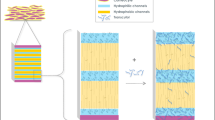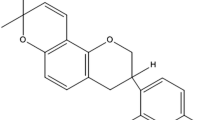ABSTRACT
Purpose
Transdermal delivery of drugs is often limited by formidable barrier properties of stratum corneum (SC). Microneedles (MN) enable creation of transient microchannels in the SC and bypass this barrier. Many reports have focused on the great effectiveness of MN in improving percutaneous flux values of a variety of drugs over a large molecular size spectrum. The objective of the present study is to evaluate the influence of formulation on MN-enhanced transdermal transport of naltrexone hydrochloride (NTX HCl).
Methods
A series of in vitro experiments employing binary mixtures of propylene glycol (PG) and water as vehicle were used with either MN-treated or untreated skin. A simple model taking into account two parallel flux values through intact skin and microchannels was used to analyze data.
Results
Transdermal permeation of NTX HCl from different donor solutions indicated that PG-rich formulations greatly limited MN-enhanced transport but had a much smaller effect on transport through intact skin.
Conclusions
Diffusion through the microchannel pathway seems to be donor viscosity-related and follows the relationship predicted by the Stokes-Einstein equation as shown by linear dependence of flux on diffusivity of NTX in donor solutions.






Similar content being viewed by others
REFERENCES
Flynn GL. Cutaneous and transdermal delivery-processes and systems of delivery. Drugs Pharm Sci. 2002;121:187–235.
Prausnitz MR, Mitragotri S, Langer R. Current status and future potential of transdermal drug delivery. Nat Rev Drug Discov. 2004;3:115–24.
Prausnitz MR, Langer R. Transdermal drug delivery. Nat Biotechnol. 2008;26:1261–8.
Henry S, McAllister DV, Allen MG, Prausnitz MR. Microfabricated microneedles: a novel approach to transdermal drug delivery. J Pharm Sci. 1998;87:922–5.
McAllister DV, Wang PM, Davis SP, Park J-H, Canatella PJ, Allen MG, et al. Microfabricated needles for transdermal delivery of macromolecules and nanoparticles: fabrication methods and transport studies. Proc Natl Acad Sci USA. 2003;100:13755–60.
Coulman SA, Barrow D, Anstey A, Gateley C, Morrissey A, Wilke N, et al. Minimally invasive cutaneous delivery of macromolecules and plasmid DNA via microneedles. Curr Drug Deliv. 2006;3:65–75.
Banks SL, Pinninti RR, Gill HS, Crooks PA, Prausnitz MR, Stinchcomb AL. Flux across microneedle-treated skin is increased by increasing charge of naltrexone and naltrexol in vitro. Pharm Res. 2008;25:1677–85.
Volpicelli JR, Rhines KC, Rhines JS, Volpicelli LA, Alterman AI, O’Brien CP. Naltrexone and alcohol dependence. Role of subject compliance. Arch Gen Psychiatry. 1997;54:737–42.
Meyer MC, Straughn AB, Lo MW, Schary WL, Whitney CC. Bioequivalence, dose-proportionality, and pharmacokinetics of naltrexone after oral administration. J Clin Psychiatry. 1984;45:15–9.
Wall ME, Brine DR, Perez-Reyes M. Metabolism and disposition of naltrexone in man after oral and intravenous administration. Drug Metab Dispos. 1981;9:369–75.
Vivitrol website. http://www.vivitrol.com/hcp/Vivitrol_Info/adherence.aspx.
Paudel KS, Nalluri BN, Hammell DC, Valiveti S, Kiptoo P, Hamad MO, et al. Transdermal delivery of naltrexone and its active metabolite 6-beta-naltrexol in human skin in vitro and guinea pigs in vivo. J Pharm Sci. 2005;94:1965–75.
Stinchcomb AL, Swaan PW, Ekabo O, Harris KK, Browe J, Hammell DC, et al. Straight-chain naltrexone ester prodrugs: diffusion and concurrent esterase biotransformation in human skin. J Pharm Sci. 2002;91:2571–8.
Vaddi HK, Hamad MO, Chen J, Banks SL, Crooks PA, Stinchcomb AL. Human skin permeation of branched-chain 3-O-alkyl ester and carbonate prodrugs of naltrexone. Pharm Res. 2005;22:758–65.
Vaddi HK, Banks SL, Chen J, Hammell DC, Crooks PA, Stinchcomb AL. Human skin permeation of 3-O-alkyl carbamate prodrugs of naltrexone. J Pharm Sci. 2009;98:2611–25.
Wermeling DP, Banks SL, Hudson DA, Gill HS, Gupta J, Prausnitz MR, et al. Microneedles permit transdermal delivery of a skin-impermeant medication to humans. Proc Natl Acad Sci USA. 2008;105:2058–63.
Qiu Y, Gao Y, Hu K, Li F. Enhancement of skin permeation of docetaxel: a novel approach combining microneedle and elastic liposomes. J Control Release. 2008;129:144–50.
Badran MM, Kuntsche J, Fahr A. Skin penetration enhancement by a microneedle device (Dermaroller) in vitro: dependency on needle size and applied formulation. Eur J Pharm Sci. 2009;36:511–23.
Osborne DW, Heneke JJ. Skin penetration enhancers cited in the technical literature. Pharm Technol. 1997;21:58–66.
Higuchi T. Physical chemical analysis of percutaneous absorption process from creams and ointments. J Soc Cosmet Chem. 1960;11:85–97.
Barry BW. Mode of action of penetration enhancers in human skin. J Control Release. 1987;6:85–97.
Goodman M, Barry BW. Action of penetration enhancers on human skin as assessed by the permeation of model drugs 5-fluorouracil and estradiol. I. Infinite dose technique. J Invest Dermatol. 1988;91:323–7.
Megrab NA, Williams AC, Barry BW. Estradiol permeation through human skin and silastic membrane: effects of propylene glycol and supersaturation. J Control Release. 1995;36:277–94.
Trottet L, Merly C, Mirza M, Hadgraft J, Davis AF. Effect of finite doses of propylene glycol on enhancement of in vitro percutaneous permeation of loperamide hydrochloride. Int J Pharm. 2004;274:213–9.
Herkenne C, Naik A, Kalia YN, Hadgraft J, Guy RH. Effect of propylene glycol on ibuprofen absorption into human skin in vivo. J Pharm Sci. 2007;97:185–97.
Watkinson RM, Guy RH, Hadgraft J, Lane ME. Optimisation of cosolvent concentration for topical drug delivery—II: influence of propylene glycol on ibuprofen permeation. Skin Pharmacol Physiol. 2009;22:225–30.
Gill HS, Prausnitz MR. Coated microneedles for transdermal delivery. J Controlled Release. 2007;117(2):227–37.
Hussain MA, Koval CA, Myers MJ, Shami EG, Shefter E. Improvement of the oral bioavailability of naltrexone in dogs: a prodrug approach. J Pharm Sci. 1987;76:356–8.
Lieband WR, Stein WD. Biological membranes behave as nonporous polymeric sheets with respect to the diffusion of nonelectrolytes. Nature (London, United Kingdom). 1969;224:240–3.
Diamond JM, Katz Y. Interpretation of nonelectrolyte partition coefficients between dimyristoyl lecithin and water. J Membr Biol. 1974;17:121–54.
Kasting GB, Smith RL, Anderson BD. Prodrugs for dermal delivery: solubility, molecular size, and functional group effects. In: Sloan KB, editor. Prodrugs: topical and ocular drug delivery. New York, USA: Marcel Dekker; 1992. p. 117–61.
Potts RO, Guy RH. Predicting skin permeability. Pharm Res. 1992;9:663–9.
Michaels AS, Chandrasekaran SK, Shaw JE. Drug permeation through human skin. Theory and in vitro experimental measurement. AIChE J. 1975;21:985–96.
Albery WJ, Hadgraft J. Percutaneous absorption: in vivo experiments. J Pharm Pharmacol. 1979;31:140–7.
Tojo K. Random brick model for drug transport across stratum corneum. J Pharm Sci. 1987;76:889–91.
Edwards DA, Langer R. A linear theory of transdermal transport phenomena. J Pharm Sci. 1994;83:1315–34.
Johnson ME, Blankschtein D, Langer R. Evaluation of solute permeation through the stratum corneum: lateral bilayer diffusion as the primary transport mechanism. J Pharm Sci. 1997;86:1162–72.
Talreja PS, Kasting GB, Kleene NK, Pickens WL, Wang T-F. Visualization of the lipid barrier and measurement of lipid pathlength in human stratum corneum. PharmSci [online computer file]. 3:No pp given; 2001.
Frasch HF, Barbero AM. Steady-state flux and lag time in the stratum corneum lipid pathway: results from finite element models. J Pharm Sci. 2003;92:2196–207.
Flynn GL. Cutaneous and transdermal delivery: processes and systems of delivery. In: Rhodes CT, Banker GS, editors. Modern pharmaceutics. New York: Marcel Dekker; 1990. p. 239–98.
Bos JD, Meinardi MMHM. The 500 Dalton rule for the skin penetration of chemical compounds and drugs. Exp Dermatol. 2000;9:165–9.
Meidan M. Emerging technologies in transdermal therapeutics. Am J Ther. 2004;11:312–6.
Flynn GL, Yalkowsky SH, Roseman TJ. Mass transport phenomena and models. Theoretical concepts. J Pharm Sci. 1974;63:479–510.
Kretsos K, Kasting Gerald B. A geometrical model of dermal capillary clearance. Math Biosci. 2007;208:430–53.
Sznitowska M, Berner B, Maibach HI. In vitro permeation of human skin by multipolar ions. Int J Pharm. 1993;99:43–9.
Cordero JA, Alarcon L, Escribano E, Obach R, Domenech J. A comparative study of the transdermal penetration of a series of nonsteroidal antiinflammatory drugs. J Pharm Sci. 1997;86:503–8.
Hadgraft J, Valenta C. pH, pKa and dermal delivery. Int J Pharm. 2000;200:243–7.
Kaufman JJ, Semo NM, Koski WS. Microelectrometric titration measurement of the pKa’s and partition and drug distribution coefficients of narcotics and narcotic antagonists and their pH and temperature dependence. J Med Chem. 1975;18:647–55.
Sugano K, Takata N, Machida M, Saitoh K, Terada K. Prediction of passive intestinal absorption using bio-mimetic artificial membrane permeation assay and the paracellular pathway model. Int J Pharm. 2002;241:241–51.
ACKNOWLEDGMENTS
The authors would like to thank Dr. Mark Prausnitz and Dr. Vladimir Zarnitsyn of Georgia Tech for providing the MN and expert advice. This research was supported by NIDA R01 DA13425.
Author information
Authors and Affiliations
Corresponding author
Rights and permissions
About this article
Cite this article
Milewski, M., Stinchcomb, A.L. Vehicle Composition Influence on the Microneedle-Enhanced Transdermal Flux of Naltrexone Hydrochloride. Pharm Res 28, 124–134 (2011). https://doi.org/10.1007/s11095-010-0191-x
Received:
Accepted:
Published:
Issue Date:
DOI: https://doi.org/10.1007/s11095-010-0191-x




